1-GLYCERYL N-[7-CHLORO-4-QUINOLYL]ANTHRANILATE HYDROCHLORIDE
Synonym(s):1-Glyceryl N-(7-chloro-4-quinolyl)anthranilate
- CAS NO.:3820-67-5
- Empirical Formula: C19H17ClN2O4
- Molecular Weight: 372.8
- MDL number: MFCD00079326
- EINECS: 223-315-7
- SAFETY DATA SHEET (SDS)
- Update Date: 2024-11-19 23:02:33
![1-GLYCERYL N-[7-CHLORO-4-QUINOLYL]ANTHRANILATE HYDROCHLORIDE Structural](https://img.chemicalbook.in/CAS/GIF/3820-67-5.gif)
What is 1-GLYCERYL N-[7-CHLORO-4-QUINOLYL]ANTHRANILATE HYDROCHLORIDE?
Originator
Glifanan,Roussel,France,1965
The Uses of 1-GLYCERYL N-[7-CHLORO-4-QUINOLYL]ANTHRANILATE HYDROCHLORIDE
Glafenine is a non-narcotic analgesic agent. Glafenine shows significant antiinflammatory activity. Glafenine is widely used for the treatment of pains of various origins.
Definition
ChEBI: A carboxylic ester that is 2,3-dihydroxypropyl anthranilate in which the amino group is substituted by a 7-chloroquinolin-4-yl group. A non-steroidal anti-inflammatory drug, glafenine and its hydrochloride salt were used for the relief of all types of pain but high incidence of anaphylactic reactions resulted in their withdrawal from the market.
Manufacturing Process
Step A: Preparation of (2,3-isopropylidenedioxy)-propyl o-nitrobenzoate - 59.6
g of 2,2-dimethyl-4hydroxymethyl-1,3-dioxolane were dissolved under
agitation in 60 cc of anhydrous pyridine. The solution was cooled to +5°c and
86.5 g of o-nitrobenzoyl chloride (prepared by Leckermann et al., Ber. vol.80,
p.488, 1947) were slowly introduced into it. The reaction mixture was agitated
for a period of two hours at room temperature and then was poured into 500
cc of ether. The mixture was filtered and the filtrate was washed successively
with 0.5 N sulfuric acid solution, with aqueous sodium bicarbonate solution
and finally with water until the wash waters were neutral. The washed solution
was dried over sodium sulfate and filtered again. The filtrate was distilled to
dryness under vacuum to obtain 116.5 g (being a yield of 92%) of (2,3-
isopropylidenedioxy)-propyl o-nitrobenzoate in the form of a yellow oil which
distilled at 178°C to 180°C at a pressure of 1 mm.
Step B: Preparation of (2,3-isopropylidenedioxy)-propyl anthranilate - 80 g of
(2,3-isopropyl-idenedioxy)propyl o-nitrobenzoate, obtained as described in
Step A, were subjected to hydrogenation for a period of one hour in 800 cc of
absolute alcohol in the presence of 2 g of palladized carbon black as catalyst.
The reaction mixture was filtered and the filtrate was evaporated under
vacuum to obtain 70.5 g (being a yield of 98.5%) of (2,3-
isopropylidenedioxy)-propyl anthranilate in the form of a yellow oil which
distilled at 159°C to 160°C under 0.5 mm of pressure.
Step C: Preparation of the (α-monoglyceride of 4-(2'-carboxyphenylamino)-7-
chloro-quinoline - A mixture of 48 g of (2,3-isopropylidenedioxy)-propyl
anthranilate, 36 g of 4.7-dichloro-quinoline, 36 cc of concentrated hydrochloric
acid and 300 cc of water was agitated while heating to reflux for a period of
two hours. The reaction mixture was filtered and the filtrate was allowed to
stand at a temperature of 0°C for a period of three hours. The hydrochloride
salt was then vacuum filtered and the salt was taken up in 600 cc 50%
methanol at reflux. The solution was made alkaline by the addition of 120 cc
of ammonia solution and iced for a period of one hour. The crystalline
precipitate obtained was vacuum filtered, washed with water and dried to
obtain 38.5 g (being a yield of 56%) of the α-monoglyceride of 4-(2'-
carboxyphenylamino-7-chloro-quinoline having a melting point of 165°C.
The product occurred in the form of pale yellow prisms and was insoluble in
water, ether, benzene, diluted alcohols, olive oil and chloroform, slightly
soluble in absolute alcohol, dioxane, tetrahydrofuran and acetone, and soluble
in dilute aqueous acids and alkalis.
brand name
Disipan;Espasmo-giliganan;Exidol;Glafezon;Glifadex;Glifanan;Glifarelax;Osodent.
Therapeutic Function
Analgesic
World Health Organization (WHO)
Glafenine, a quinolylanthranilate derivative, was introduced in 1965 for use as an analgesic. By the late 1970s its use had been associated with severe allergic responses, including anaphylactoid reactions, which led to its withdrawal in one country whereas in others a warning to this effect is required in the product information. In 1992, on the advice of the Committee for Proprietary Medicinal Products of the European Communities, glafenine was eventually withdrawn worldwide by the major manufacturer.
Hazard
Moderately toxic by ingestion. Human systemic effects.
Properties of 1-GLYCERYL N-[7-CHLORO-4-QUINOLYL]ANTHRANILATE HYDROCHLORIDE
| Melting point: | 170℃ |
| Boiling point: | 618℃ |
| Density | 1.428 |
| refractive index | 1.6800 (estimate) |
| Flash point: | 328℃ |
| storage temp. | 2-8°C(protect from light) |
| solubility | DMSO:100.0(Max Conc. mg/mL);268.24(Max Conc. mM) |
| form | Solid |
| pka | pKa (20°C) 7.2 |
| color | Light yellow to yellow |
| Water Solubility | 38.46g/L(temperature not stated) |
Safety information for 1-GLYCERYL N-[7-CHLORO-4-QUINOLYL]ANTHRANILATE HYDROCHLORIDE
| Signal word | Warning |
| Pictogram(s) |
 Exclamation Mark Irritant GHS07 |
| GHS Hazard Statements |
H315:Skin corrosion/irritation H319:Serious eye damage/eye irritation H335:Specific target organ toxicity, single exposure;Respiratory tract irritation |
| Precautionary Statement Codes |
P261:Avoid breathing dust/fume/gas/mist/vapours/spray. P305+P351+P338:IF IN EYES: Rinse cautiously with water for several minutes. Remove contact lenses, if present and easy to do. Continuerinsing. |
Computed Descriptors for 1-GLYCERYL N-[7-CHLORO-4-QUINOLYL]ANTHRANILATE HYDROCHLORIDE
New Products
(S)-3-Aminobutanenitrile hydrochloride 4-Methylphenylacetic acid N-Boc-D-alaninol N-BOC-D/L-ALANINOL Tert-butyl bis(2-chloroethyl)carbamate 3-Morpholino-1-(4-nitrophenyl)-5,6-dihydropyridin- 2(1H)-one Furan-2,5-Dicarboxylic Acid Tropic acid 1-Bromo-3,5-Di-Tert-Butylbenzene S-2-CHLORO PROPIONIC ACID ETHYL ISOCYANOACETATE 2-Bromo-1,3-Bis(Dimethylamino)Trimethinium Hexafluorophosphate 4-IODO BENZOIC ACID 3-NITRO-2-METHYL ANILINE 1-(2,4-DICHLOROPHENYL) ETHANAMINE (2-Hydroxyphenyl)acetonitrile 4-Bromopyrazole 2-(Cyanocyclohexyl)acetic acid 4-methoxy-3,5-dinitropyridine 1-(4-(aminomethyl)benzyl)urea hydrochloride 2-aminopropyl benzoate hydrochloride diethyl 2-(2-((tertbutoxycarbonyl)amino) ethyl)malonate tert-butyl 4- (ureidomethyl)benzylcarbamate Ethyl-2-chloro((4-methoxyphenyl)hydrazono)acetateRelated products of tetrahydrofuran
![1-GLYCERYL N-[7-CHLORO-4-QUINOLYL]ANTHRANILATE HYDROCHLORIDE](https://img.chemicalbook.in/CAS/GIF/3820-67-5.gif)
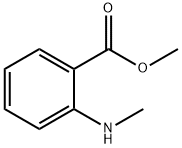
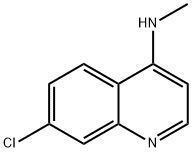
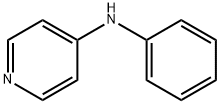
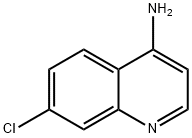
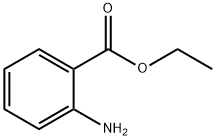
You may like
-
 2033-24-1 98%View Details
2033-24-1 98%View Details
2033-24-1 -
 42831-50-5 5-METHYLISOXAZOLE-4-CARBOXYLIC ACID 98%View Details
42831-50-5 5-METHYLISOXAZOLE-4-CARBOXYLIC ACID 98%View Details
42831-50-5 -
 1975-50-4 98%View Details
1975-50-4 98%View Details
1975-50-4 -
 2-HYDROXY BENZYL ALCOHOL 98%View Details
2-HYDROXY BENZYL ALCOHOL 98%View Details
90-01-7 -
 2-Chloro-1,3-Bis(Dimethylamino)Trimethinium Hexafluorophosphate 221615-75-4 98%View Details
2-Chloro-1,3-Bis(Dimethylamino)Trimethinium Hexafluorophosphate 221615-75-4 98%View Details
221615-75-4 -
 61397-56-6 CIS BROMO BENZOATE 98%View Details
61397-56-6 CIS BROMO BENZOATE 98%View Details
61397-56-6 -
 14714-50-2 (2-Hydroxyphenyl)acetonitrile 98+View Details
14714-50-2 (2-Hydroxyphenyl)acetonitrile 98+View Details
14714-50-2 -
 118753-70-1 98+View Details
118753-70-1 98+View Details
118753-70-1